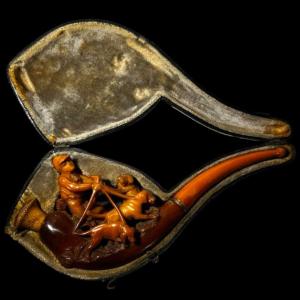Pipe carved in meerschaum, depicting a scene with a hunter and his hunting dogs. The whole is worked in relief, highlighting the details of the animal and human decoration. The mouthpiece is made of amber, and the pipe is preserved in its original sheathed case.Meerschaum pipes, prized in the 19th century for their lightness and fine carving, were frequently decorated with figurative or narrative scenes. Hunting themes (dogs, hunters, horses, wild animals) were particularly popular, reflecting the decorative tastes of the time.About Meerschaum
Meerschaum (from the German Meerschaum, literally “sea foam”) is not a foam but a natural mineral: its true name is sepiolite. It is a white, light, and porous clay, composed mainly of hydrated magnesium silicate. It is found mainly in Turkey (notably in the Eskişehir region, home to the most beautiful deposits), but also in Greece, Spain, and North Africa.Why it was used for pipes




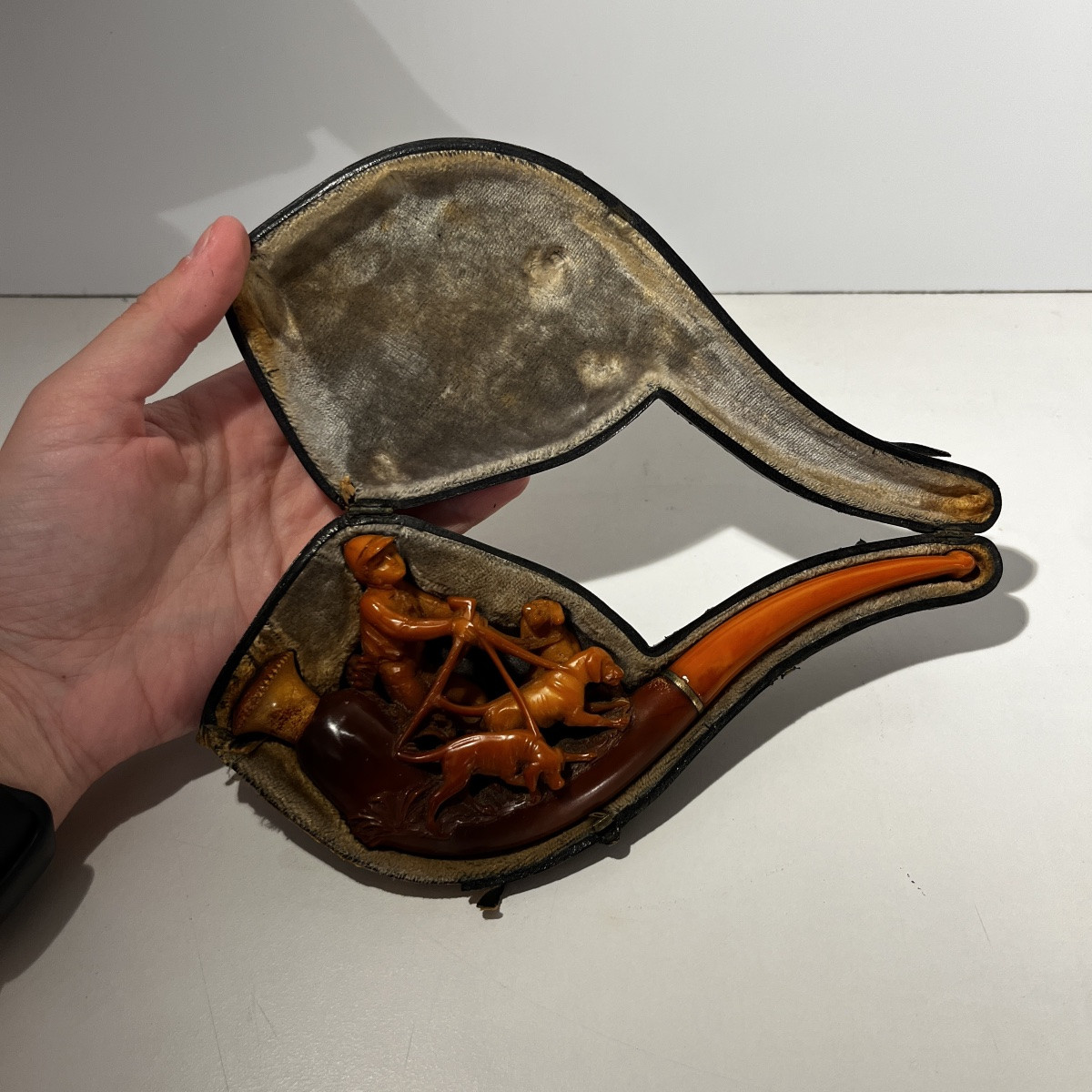
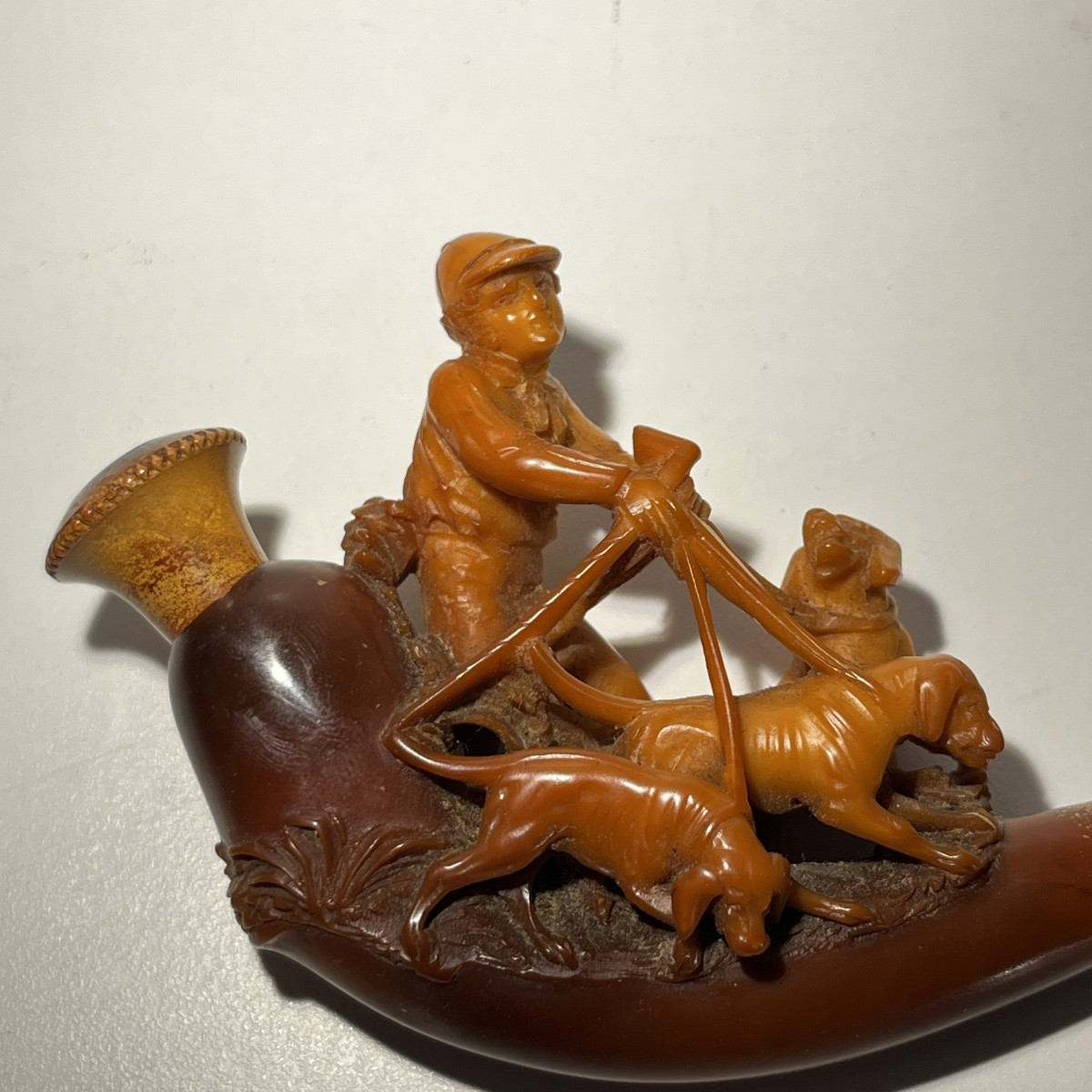

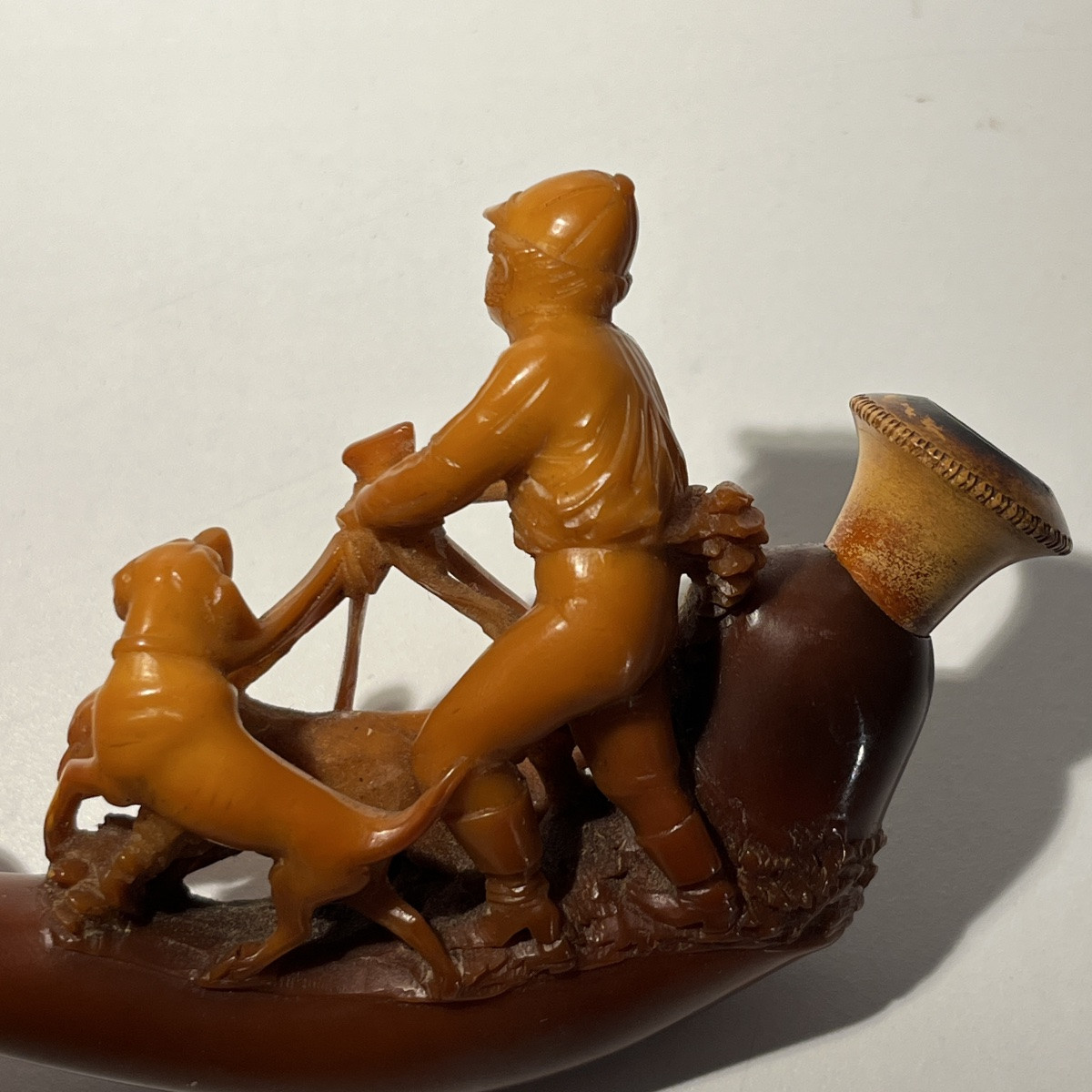
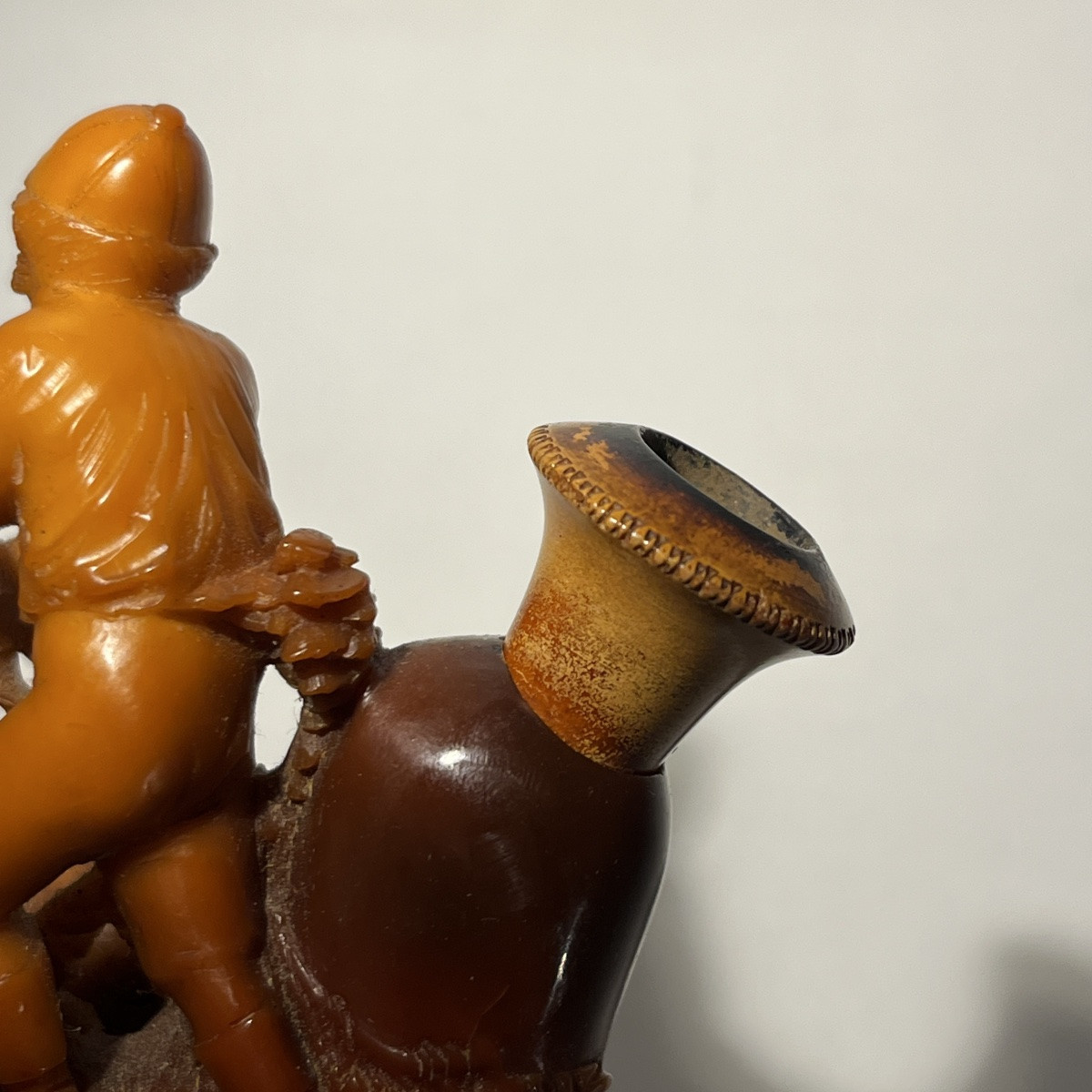
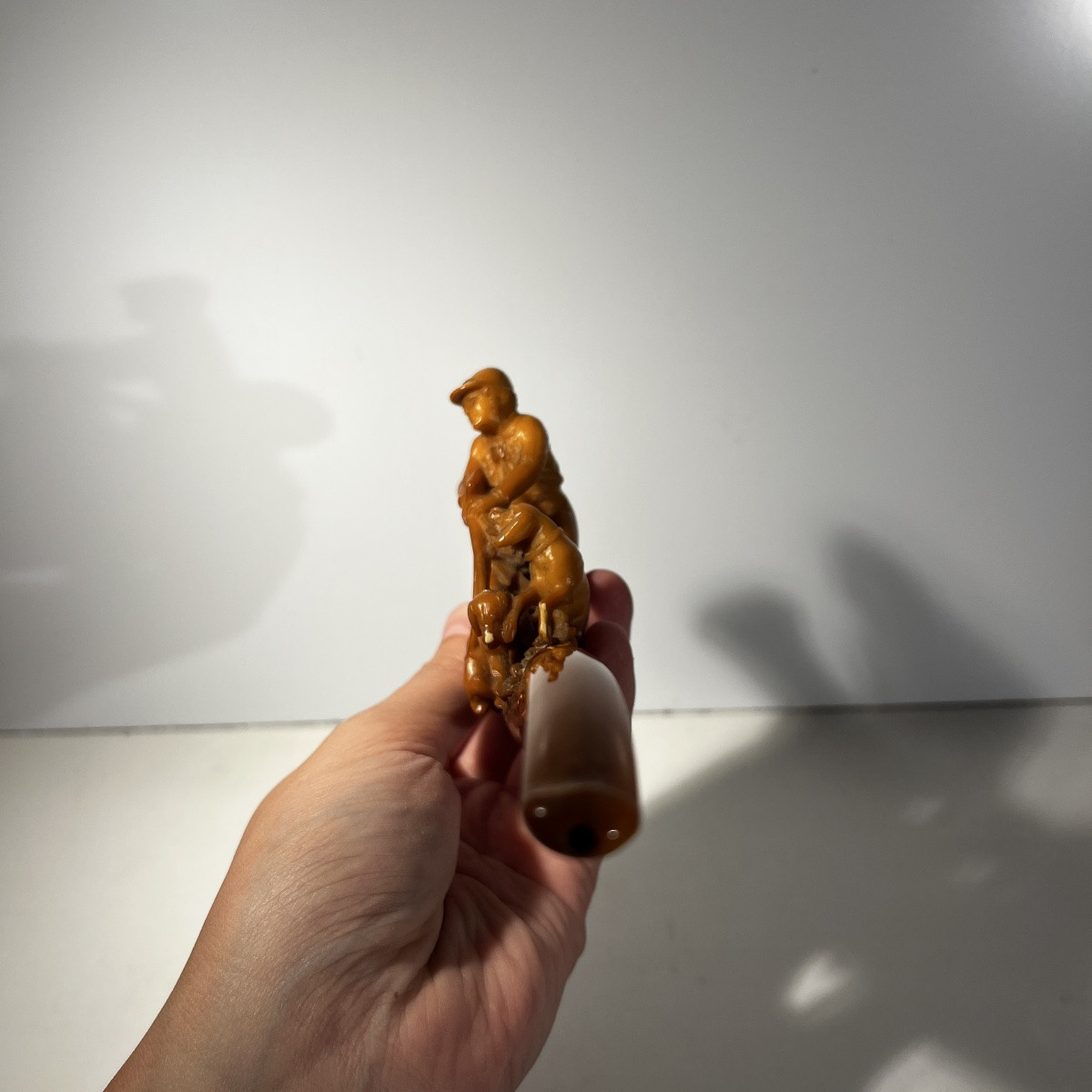
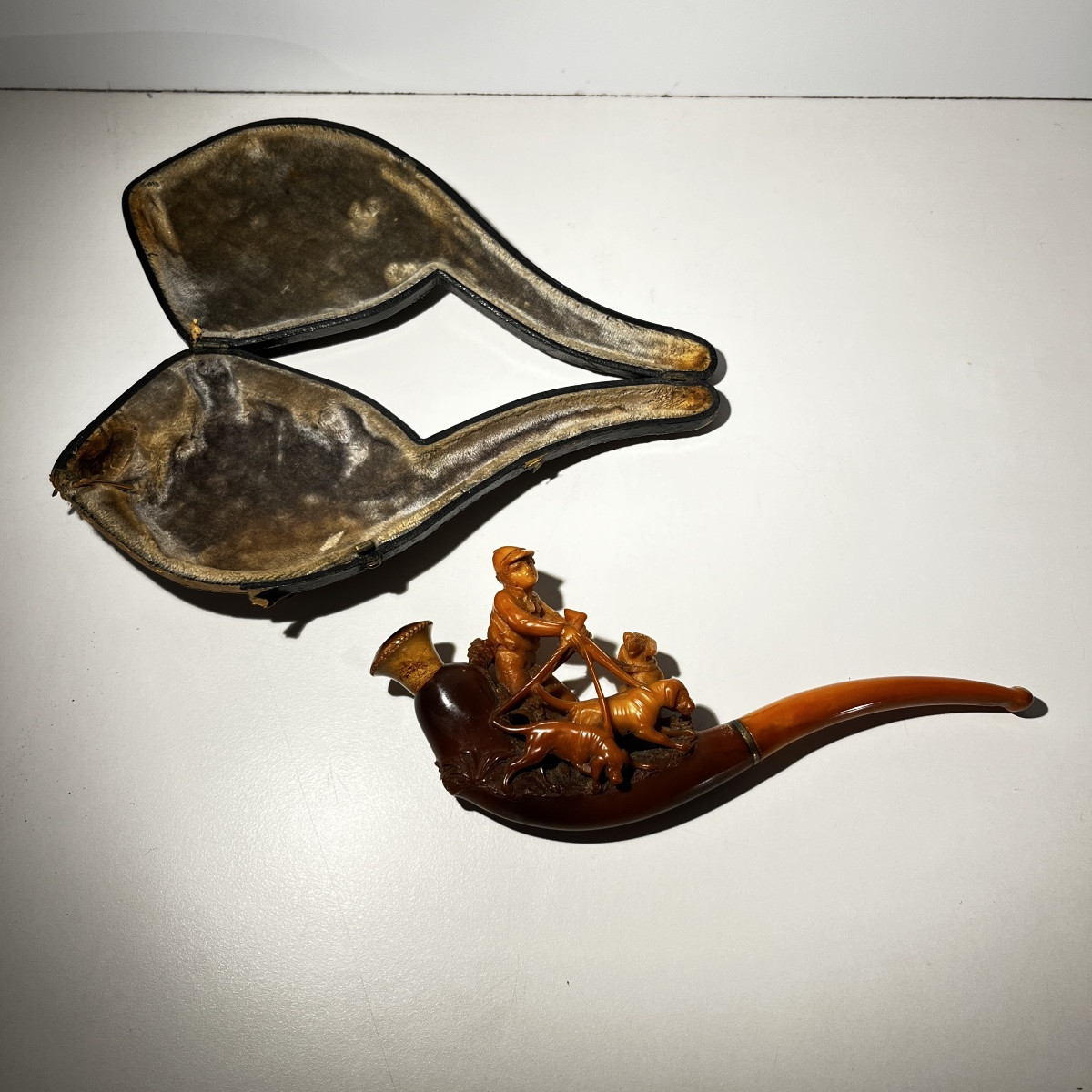
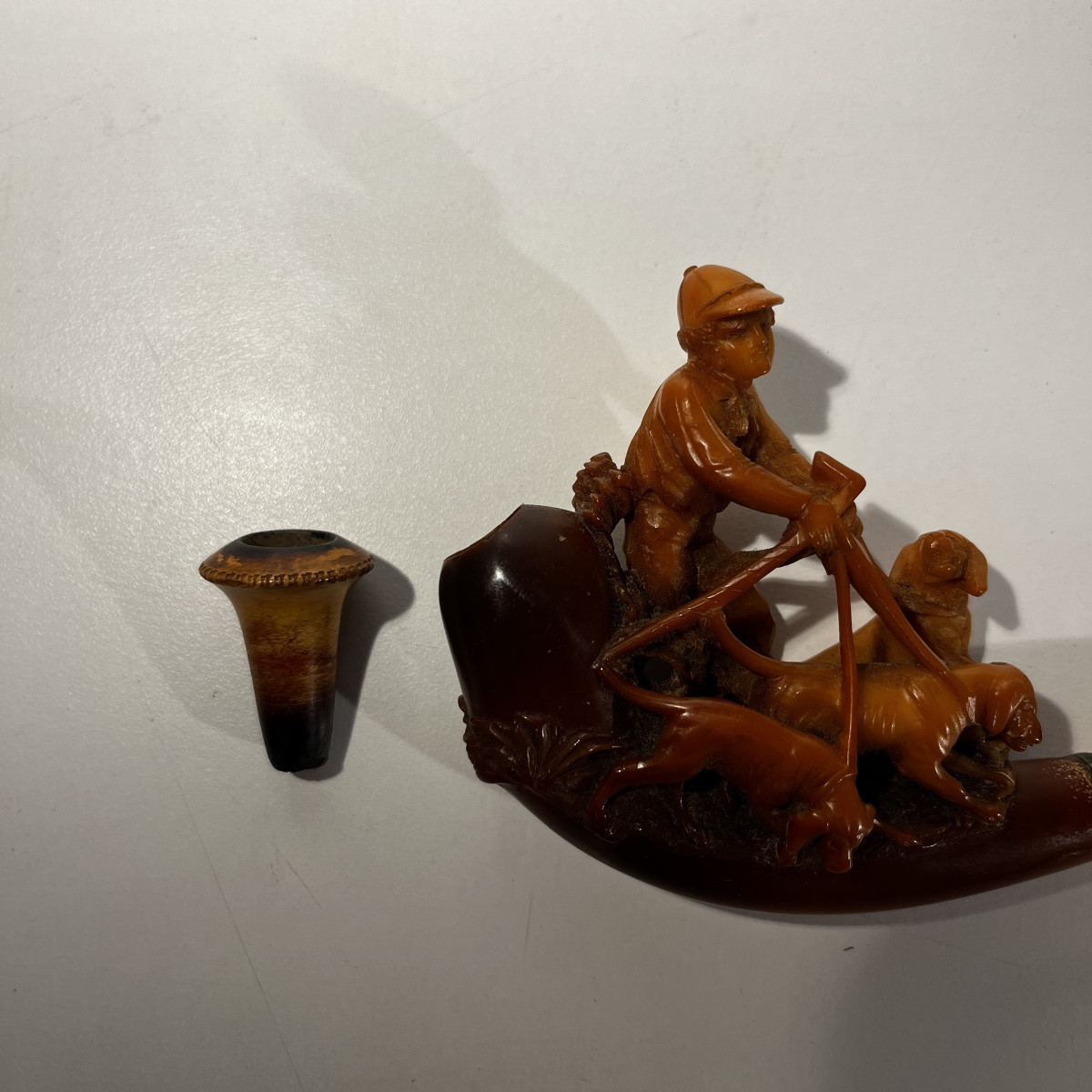

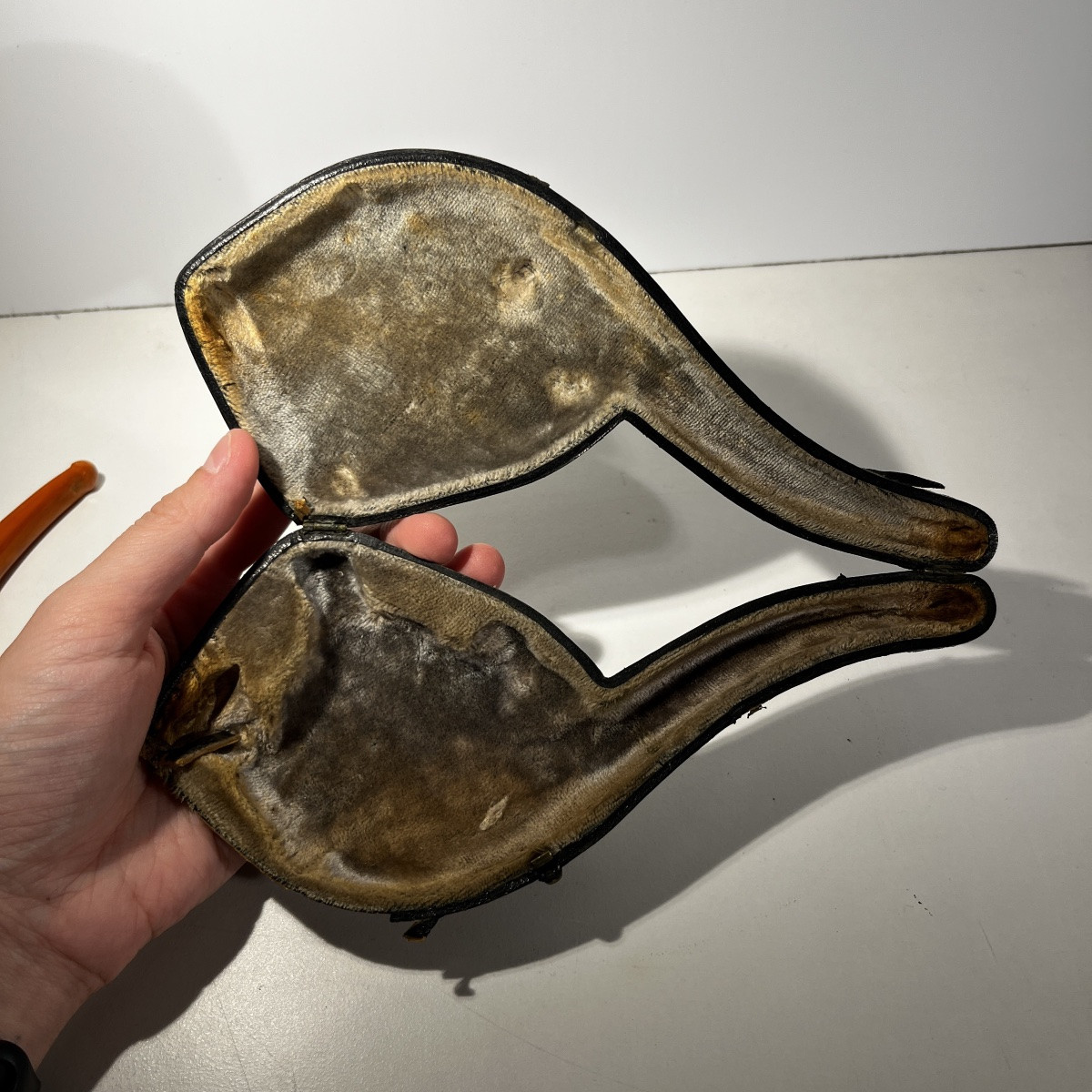
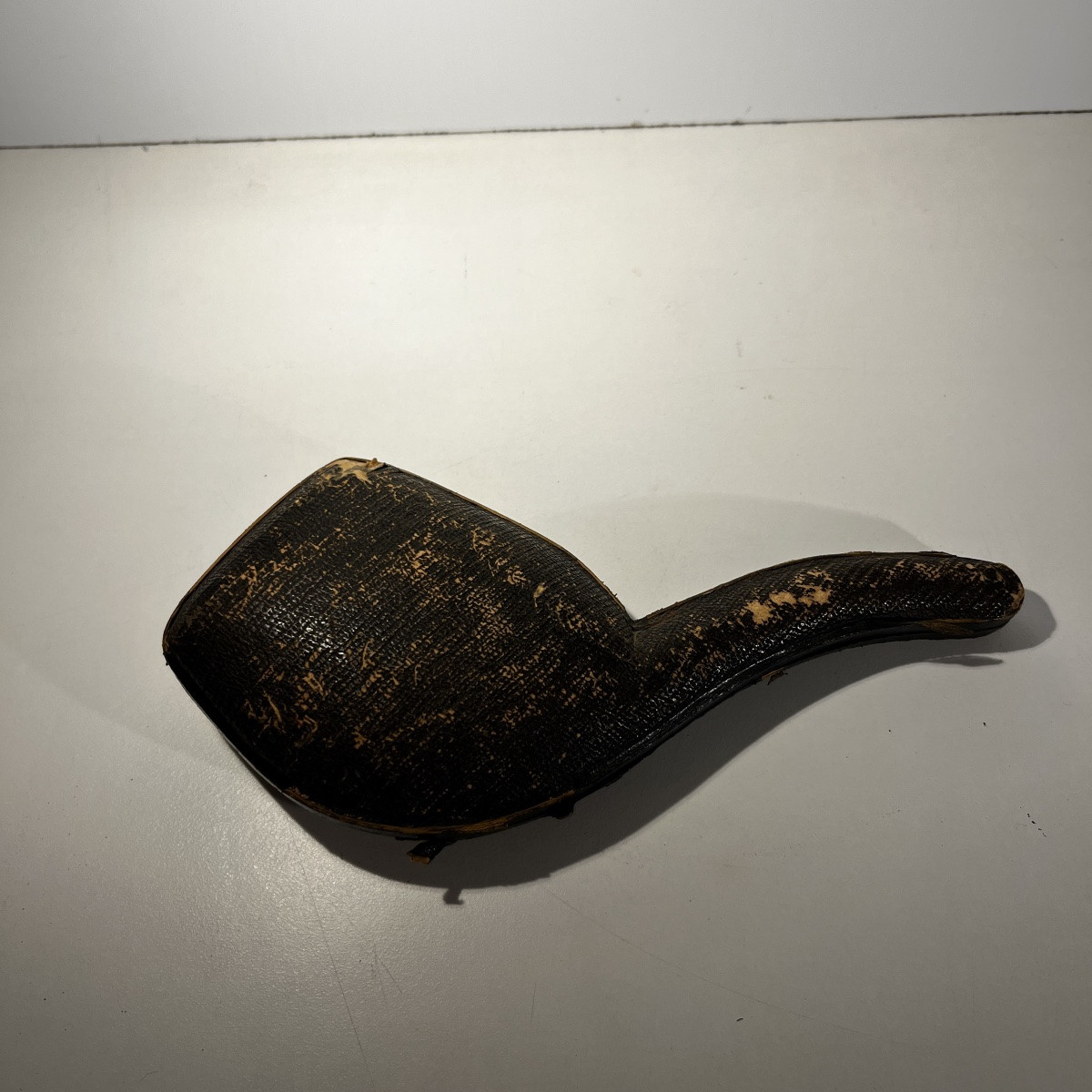






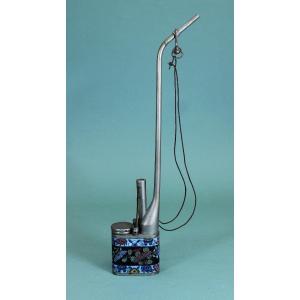








 Le Magazine de PROANTIC
Le Magazine de PROANTIC TRÉSORS Magazine
TRÉSORS Magazine Rivista Artiquariato
Rivista Artiquariato
